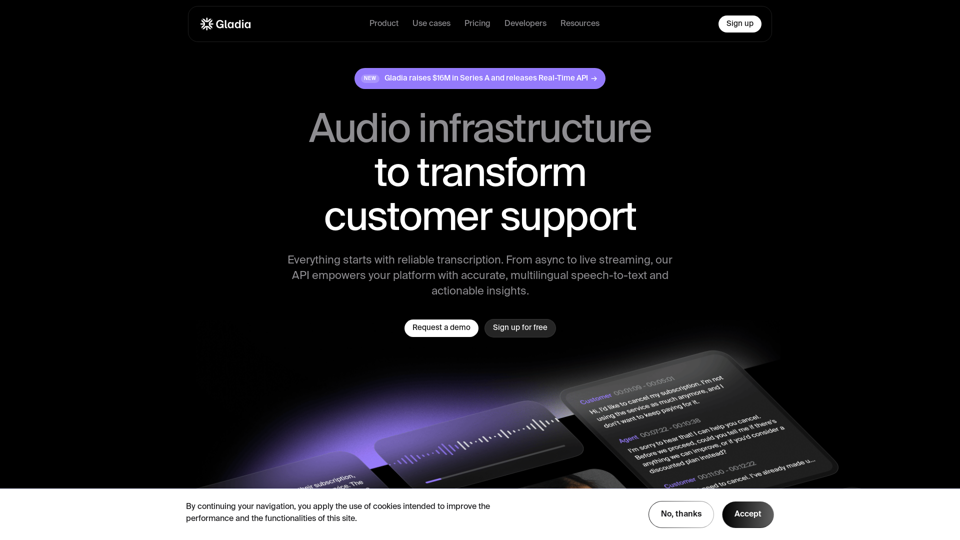What is Gladia I Audio Transcription API?
Gladia I Audio Transcription API is an AI-driven platform that provides access to a vast array of AI technologies for various needs, including speech-to-text, real-time transcription, and audio intelligence add-ons.
Features of Gladia I Audio Transcription API
- Supports 100+ languages and accents
- Highly accurate asynchronous and real-time transcription
- Real-time transcription engine with <300ms latency
- Add-ons such as custom vocabulary, diarization, sentiment analysis, named entity recognition, word-level timestamps, summarization, and more
- Compatible with all tech stacks and telephony protocols, including SIP, VoIP, FreeSwitch, and Asterisk
- Easy-to-scale with a pay-as-you-go system
- Enterprise-grade API built to adapt to growing needs
How to Use Gladia I Audio Transcription API
- Sign up at app.gladia.io to get started
- Choose between trying the product in the playground environment or generating a new API key
- Find all the information needed in the developer's documentation
Pricing of Gladia I Audio Transcription API
- Three tiers: free access, Pay-as-you-Go, and Enterprise
- Pricing page has more information on the different tiers
Helpful Tips for Using Gladia I Audio Transcription API
- Supports a wide range of audio formats and codecs, including WAV, m4a, flac, and aac
- Compatible with multiple programming languages, including TypeScript and Python
- Provides code examples in multiple languages to assist developers in integrating the speech-to-text API
Frequently Asked Questions
- What are the key features of Gladia's audio transcription API?
- Highly accurate asynchronous and real-time transcription, add-ons, and more
- What languages does Gladia's speech-to-text API support?
- 100+ languages and accents
- How can I get started with implementing Gladia's API in my product?
- Sign up at app.gladia.io and find all the information needed in the developer's documentation
- Is Gladia secure?
- Yes, Gladia is secure and offers GDPR-compliant audio transcription, on-premises hosting, and air-gapped hosting depending on security requirements
